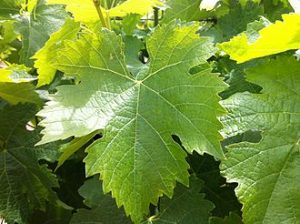After a lovely launch party last weekend, our brand-new 2021 Picnic Races Tempranillo Graciano has finally hit the shelves!
Here are some gorgeous photos Lucy took last weekend before Rob’s rare beef came out to join Clint’s Romesco Sauce – then all bets were off!



Let’s celebrate its return by revisiting this post from last year…
What is Tempranillo and how do I pronounce it?
Tempranillo is the dominant variety found in a wine region of northern Spain called Rioja. Given its Spanish origins, where a double “l” is pronounced as a “y” sound, the correct pronunciation is Tem-pra-nee-yo (but we’ll forgive you if you order a tem-pra-nill-o!). The name comes from the Spanish word, temprana. It means early, referring to the fact that it’s an early-ripening red variety.
In the vineyard
The vines are particularly suited to relatively high altitudes, but can also tolerate a much warmer climate. Tempranillo vines can grow quite vigorously. Therefore, vineyard managers needs to carefully manage the crop to avoid over-cropping and excessive vegetative growth.
 The highly serrated nature of its leaves makes it one of the most recognisable varieties in the vineyard. It is one of the few varieties where the leaves turn bright red in autumn. It’s one of the most beautiful sights!
The highly serrated nature of its leaves makes it one of the most recognisable varieties in the vineyard. It is one of the few varieties where the leaves turn bright red in autumn. It’s one of the most beautiful sights!
Tempranillo in Australia
Tempranillo has only been planted here since around 1994 with two of the first producers being Brown Brothers in North East Victoria and Yalumba in the Barossa. Since then, Tempranillo has been planted in many regions across the country, all with relative success. It was first planted in the Adelaide Hills around 14 years ago.
Interesting facts
Tempranillo is…
- OLD. The general theory is that Tempranillo was introduced to the Iberian Peninsula (Spain and Portugal) by the Phoenicians over 3,000 years ago!
- one of the top varieties blended into port wine from Portugal.
- is the fourth-most planted variety in the world.
- is considered one of the nine red noble grapes.
The noble grapes are 18 varieties of red and white wine grapes that define the complete range of wine flavours. They are most recognizable for the top-quality wine they produce and are said to retain their character no matter where they are planted.
The 9 red noble grapes from lightest to darkest are:
Pinot Noir, Grenache, Merlot, Sangiovese, Nebbiolo, Tempranillo, Cabernet Sauvignon, Shiraz and Malbec.
What does it taste like?
Tempranillo grapes produce dark wines with aromatic fruity characters. The tannins are soft and sweet and become very smooth in the barrel. They are typically medium bodied with a weight similar to Cabernet Sauvignon or Sangiovese.
Tempranillo is characterised by flavours of blackberry, black cherry, raspberry, vanilla and clove.
Loving our blog? Sign up for weekly updates straight to your inbox…
[withwine type=’join-mailing-list’]
So, what is this “Graciano” you speak of? I’m glad you asked. Let’s find out more…
Graciano
Graciano is a black-skinned variety from Northern Spain. It is mostly grown in the Navarra and Rioja wine regions (those green bits on the right-hand side of the map).
It’s not commonly grown in other parts of the world, although small quantities can be found in California and here in Australia. It is also grown in France under the name Morrastel.
The classic Spanish Graciano wine is moderately tannic, deeply coloured and intensely perfumed. It has aromas of mulberry, violets and chocolate.
Graciano’s intense flavours and aromas make it perfect for blending. In Rioja it is very popular with winemakers who use it to make the classic Rioja blend with Tempranillo and Grenache. Even when it is used in only small volumes, it has a definite influence over the finished product.
Unfortunately, Graciano can be a bit of a pain to grow. The vines are very low-yielding, which is probably the biggest reason growers chose not to plant more of them. They are also particularly susceptible to rot and downy mildew. In the 20th Century, many Rioja wineries uprooted their Graciano vines in favour of more fashionable grapes such as Tempranillo and Cabernet Sauvignon. Happily, though, the variety is regaining popularity.
We’ve been growing Graciano in Australia for 100 years. Brown Brothers planted vines in the King Valley (Victoria) in the 1920s. While we still don’t grow a lot of Graciano, it can be found all over South Australia and in Margaret River in Western Australia.
This one is in your May club packs, but I guarantee you’ll want a few extras! Send me an email if you need to top up your pack!
